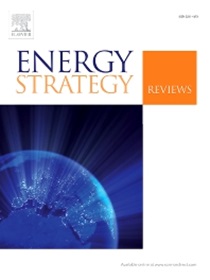A comparative analysis of thermal comfort, energy consumption, pollutant emissions, and visual comfort in a school building utilizing electrochromic and thermochromic windows
IF 7.9
2区 工程技术
Q1 ENERGY & FUELS
引用次数: 0
Abstract
This study investigates a school building, a structure particularly sensitive to thermal and visual comfort, simulated across three cities in Iran, each characterized by distinct climatic conditions. For each scenario, the thermophysical properties of selected glazing types were modeled under controlled parameters, including transparent and tinted states. The analysis focused on critical performance metrics, including average indoor air temperature during both peak hot and cold periods (August 17th and January 3rd), annual energy consumption, carbon dioxide emissions, and natural daylight availability within a representative classroom. The results reveal that conventional glass outperformed smart glass in heating mode, consistently achieving indoor temperatures closer to the desired setpoint across all three cities. However, in cooling mode, transparent thermochromic windows exhibited superior performance, maintaining average indoor temperatures of approximately 28 °C in the hottest climate and 25 °C in the coldest climate during occupied hours. Compared to buildings equipped with conventional windows, the most substantial reduction in annual natural gas consumption was observed in Yazd, with a decrease of 47.8 %, while the greatest reduction in total annual energy consumption occurred in Tabriz, at 37.2 %. However, these energy savings were accompanied by a decline in thermal comfort, which remains a significant challenge in this study. The highest level of visual comfort during the midday hours was achieved with the thermochromic window in its colored state (approximately 300lux), considering the specific lighting requirements for educational use.
使用电致变色窗和热致变色窗的学校建筑的热舒适、能源消耗、污染物排放和视觉舒适的比较分析
本研究调查了一座学校建筑,这是一种对热舒适和视觉舒适特别敏感的结构,模拟了伊朗三个城市,每个城市的气候条件都不同。对于每种情况,所选玻璃类型的热物理性质在受控参数下建模,包括透明状态和着色状态。分析的重点是关键性能指标,包括高峰冷热期(8月17日和1月3日)的平均室内空气温度、年度能源消耗、二氧化碳排放和代表性教室内的自然光利用率。结果显示,传统玻璃在加热模式下的表现优于智能玻璃,在所有三个城市中,室内温度始终接近所需的设定值。然而,在制冷模式下,透明热致变色窗表现出优越的性能,在使用时间内,在最热的气候下保持室内平均温度约28°C,在最冷的气候下保持25°C。与装有传统窗户的建筑物相比,亚兹德的年天然气消耗量减少幅度最大,减少了47.8%,而大不里士的年总能耗减少幅度最大,减少了37.2%。然而,这些节能伴随着热舒适的下降,这在本研究中仍然是一个重大挑战。考虑到教育用途的特定照明要求,中午时分的最高视觉舒适度是通过彩色状态的热致变色窗户(约300勒克斯)实现的。
本文章由计算机程序翻译,如有差异,请以英文原文为准。
求助全文
约1分钟内获得全文
求助全文
来源期刊

Energy Strategy Reviews
Energy-Energy (miscellaneous)
CiteScore
12.80
自引率
4.90%
发文量
167
审稿时长
40 weeks
期刊介绍:
Energy Strategy Reviews is a gold open access journal that provides authoritative content on strategic decision-making and vision-sharing related to society''s energy needs.
Energy Strategy Reviews publishes:
• Analyses
• Methodologies
• Case Studies
• Reviews
And by invitation:
• Report Reviews
• Viewpoints
 求助内容:
求助内容: 应助结果提醒方式:
应助结果提醒方式:


